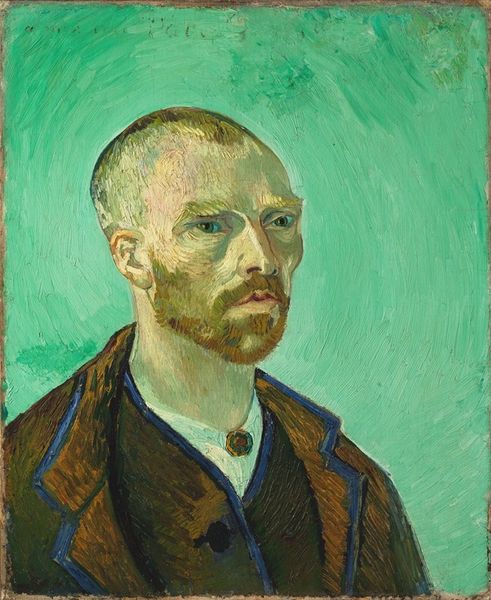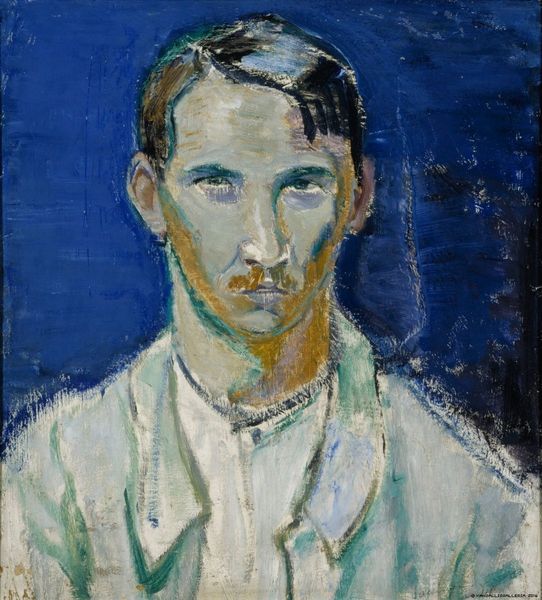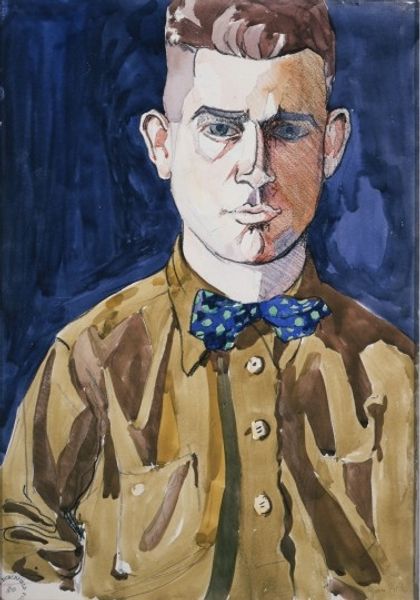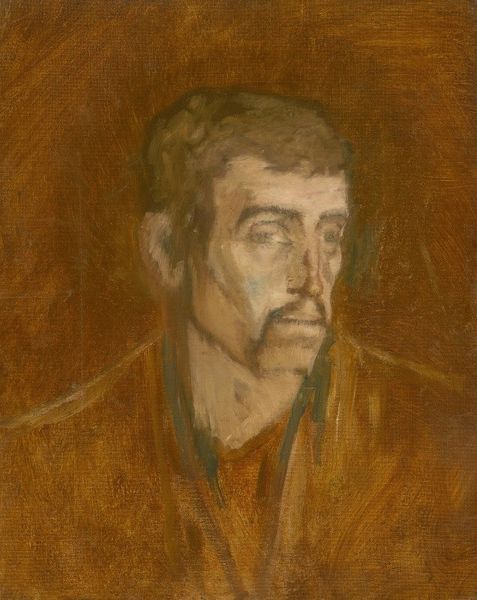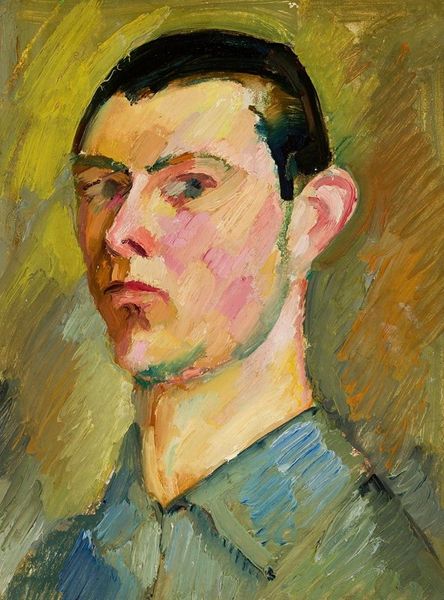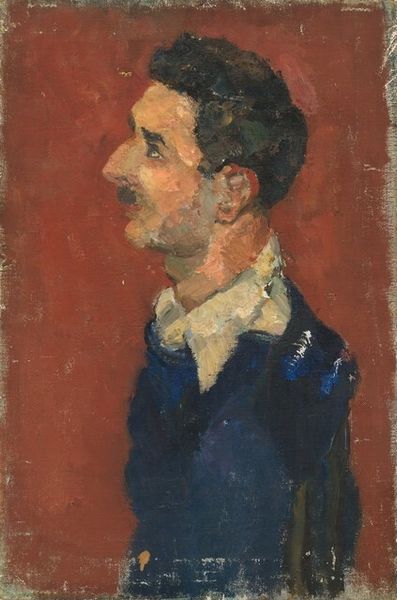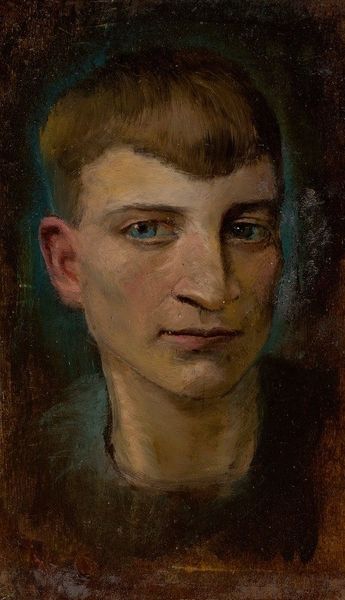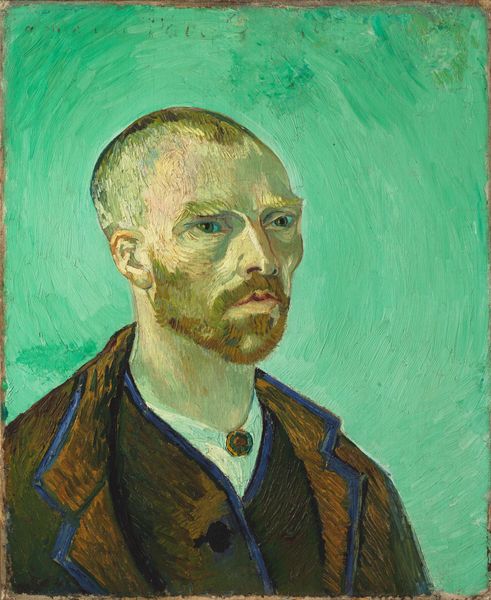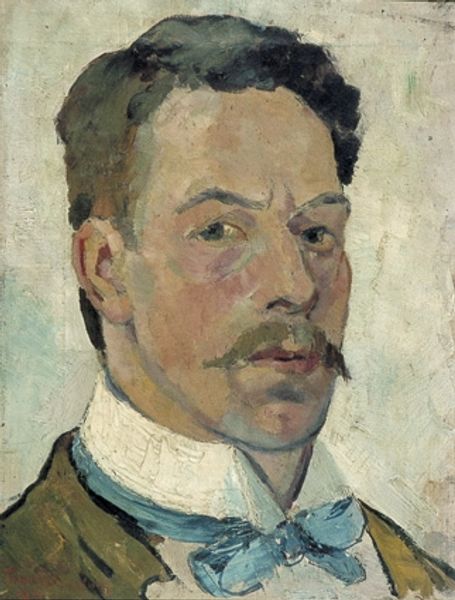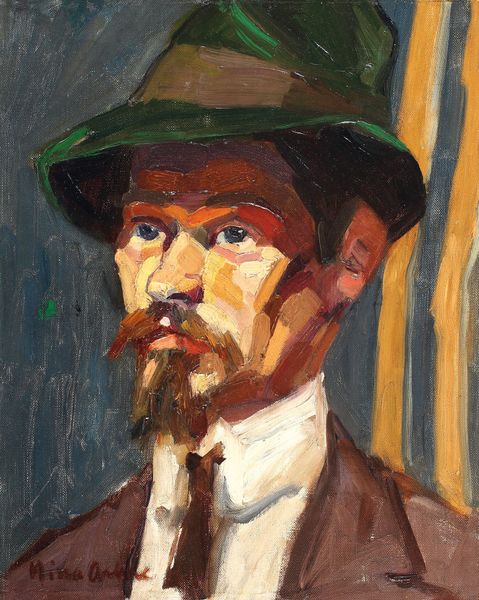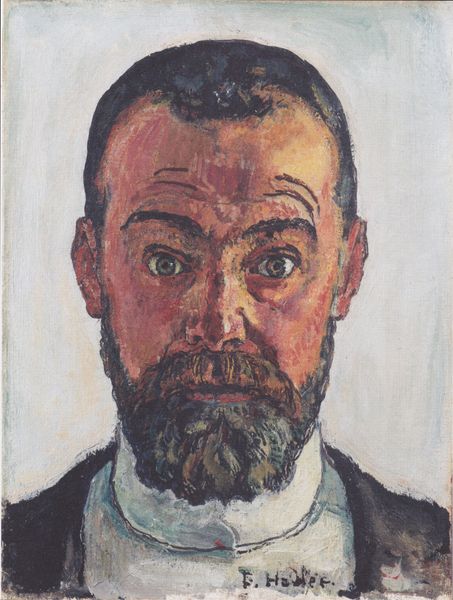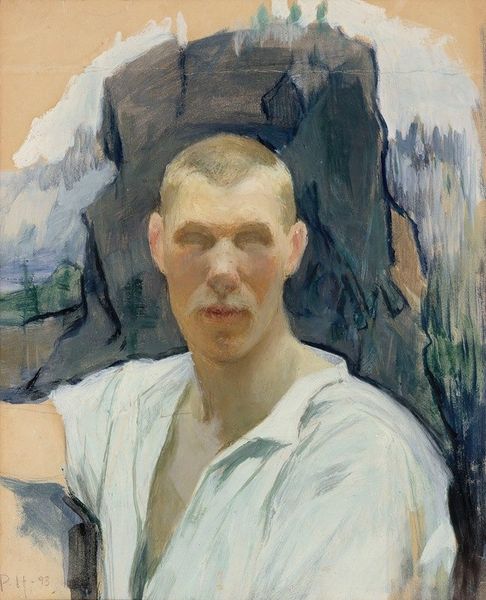
painting, oil-paint
#
portrait
#
figurative
#
painting
#
impressionism
#
oil-paint
#
oil painting
#
genre-painting
#
post-impressionism
#
portrait art
Copyright: Public Domain: Artvee
Curator: Before us hangs Van Gogh’s 1888 oil on canvas portrait of Eugène Boch. What do you make of it? Editor: Well, the color palette is immediately striking. The warm yellows of Boch's coat sharply contrast with the deep blues of the starry background. It’s melancholic but dignified, I think. Curator: And how does it speak to the broader artistic currents of the time, specifically Van Gogh’s positioning within the post-impressionist milieu? Editor: Van Gogh created this piece while living in Arles, a period marked by intense productivity but also significant emotional struggle. We know he was experimenting with depicting inner states of being through color and composition. Here, Boch's pensive expression and the swirling cosmic backdrop might reflect a search for meaning, both personally and artistically. The means of applying oil paint – the strokes themselves and their placement – convey a sort of controlled urgency and a restless spirit. Curator: Yes, and it’s interesting to consider Boch’s position. He was himself a painter and an avid art collector, deeply engaged in the avant-garde circles of the late 19th century. In some ways, his patronage enabled Van Gogh's work. There's a whole economic system implied here—artists, patrons, dealers, and critics—all intersecting and supporting each other. Consider the social relationships, labor practices, and systems of exchange that fostered artistic innovation. Editor: Absolutely. And if we dig a little deeper formally, notice how Van Gogh uses complementary colors – blues and yellows, oranges, reds – to intensify the visual impact. The brushstrokes are visible, almost frantic in places, adding texture and dynamism. His choices create this emotionally charged image that lingers in your mind. Curator: Considering Boch’s background adds another layer, doesn’t it? He wasn't just a passive sitter; he actively participated in the artistic and social developments of his time. These interactions—how they support the materiality of art making and impact creative expression—is at the heart of it. Editor: So, a striking composition born from both a focused application of aesthetic tools, but also deeply embedded social structures. Curator: Precisely. And those tensions resonate through to our modern perspective. Editor: Indeed. It invites sustained viewing and contemplation.
Comments
No comments
Be the first to comment and join the conversation on the ultimate creative platform.

